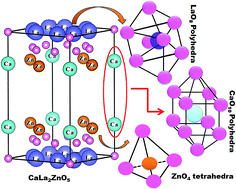Influence of Ho3+ doping on the temperature sensing behavior of Er3+–Yb3+ doped La2CaZnO5 phosphor
Abstract
In this paper, a series of Er3+/Yb3+ and Er3+/Yb3+/Ho3+ codoped La2CaZnO5 (LCZ) upconversion (UC) phosphors were synthesized by the combustion route. The UC emission from LCZ phosphors, codoped with fixed Er3+, Ho3+, and various Yb3+ concentrations has been investigated. The structural and upconversion properties of the synthesized phosphors were studied in detail. Under 980 nm laser excitation, the codoped samples showed green UC emission that consisted of three well-known emission bands centered at 522, 548 and 672 nm generated by the 2H11/2 → 4I15/2, 4S3/2 → 4I15/2 and 4F9/2 → 4I15/2 transitions of Er3+ ions, respectively. The emission intensities of these bands have been enhanced sufficiently on codoping of Yb3+ ions in the LCZ : Er3+ system. An effort has been presented to explain the enhancement on the basis of a power dependence study and an energy level diagram. The luminescence lifetimes of the green emission of the LCZ samples with different codoping were also recorded and incorporated to explain the energy transfer mechanism. The strong temperature dependence of the fluorescent intensity ratio between two green emissions makes the material suitable for temperature sensing purposes and it is also suitable up to high temperatures of 500 K. A relatively high-temperature sensor with good sensitivity 0.00625 K−1 was found from the observed results. An increment of 6% for the sensitivity is observed over the existing LCZ phosphor after co-doping with Ho3+. These results indicate that the Er3+/Ho3+/Yb3+ codoped LCZ material is an effective UC phosphor and may be a potential candidate for high-temperature sensors.



 Please wait while we load your content...
Please wait while we load your content...